Modesty Blaise
 Cover of the first U.S. printing of the Modesty Blaise novel |
|
| Author(s) | Peter O’Donnell Artists: Jim Holdaway Enrique Badia Romero John M. Burns Patrick Wright Neville Colvin Dick Giordano |
| Current status / schedule | Finished |
| Launch date | May 13, 1963 |
| End Date | July 7, 2002 |
Modesty Blaise is a comic strip featuring a fictional character of the same name, created by Peter O’Donnell (writer) and Jim Holdaway (art) in 1963. The strip follows the adventures of Modesty Blaise, an exceptional young woman with many talents and a criminal past, and her trusty sidekick Willie Garvin. It was adapted into films made in 1966, 1982, and 2003 and a series of thirteen novels and short story collections, beginning in 1965.
Many critics see the early years of the strip as a classic of adventure comic strips. The novels are regarded by some as being among the classics of adventure fiction.
Premise
In 1945 a nameless girl escaped from a displaced person (DP) camp in Kalyros, Greece. She did not remember anything from her short past. She wandered through post-WW2 Mediterranean, Middle Eastern and North African regions. During these years she learned to survive the hard way. She befriended another wandering refugee, a Hungarian scholar named Lob who gave her an education and a name: Modesty (Blaise she added herself later, after Merlin’s tutor from the Arthurian legends[1]). Eventually she took control of a criminal gang in Tangier and expanded it to international status as “The Network”.[2]
During these years she met Willie Garvin. Despite the desperate life he was leading, she saw his potential and offered him a job. Inspired by her belief in him, he pulled through as her right-hand man in The Network and became Modesty Blaise’s most trusted friend. Theirs is a strictly platonic relationship and is based on mutual respect and shared interests. They have never gone to bed with each other, fearing that would ruin their special bond. He has always called her “Princess”, a form of address only he is allowed to use. Other members of The Network would call Modesty “Mam’selle” (as in t he French term “Mademoiselle” or “Miss”).
he French term “Mademoiselle” or “Miss”).
When she felt she’d made enough money, she retired and moved to England; Willie Garvin followed suit. Bored by their new lives among the idle rich, they accepted a request for assistance from Sir Gerald Tarrant, a high-ranking official of the British secret service — and this is where the story really begins (this is treated differently in the first comic strip and the first book – see note in Canon debate below).
Many of her adventures are based on “capers” she and Willie Garvin become involved in as a result of their association with Tarrant. However, they may also help perfect strangers or fight various eccentric villains in exotic locations of their own volition if the cause fits their values; “ghosts” from their Network past also emerge to haunt them from time to time. Although Modesty and Willie will not hesitate to kill if necessary — and have, on occasion, taken on the roles of judge, jury, and executioner when dealing with particularly unsavory types — they avoid deadly force whenever possible, often relying upon their extraordinary physical and weapons skills to change a killing blow into a knock-out. Willie often confirms with Modesty beforehand whether a mission is to be, as the duo puts it, for “sleeps” or for “keeps”.

A dumbbell-shaped yawara stick, or “kongo” as it is called in the Modesty Blaise books and comic strips
The kinds of fights and battles that Modesty and Willie have against the bad guy s are often very special. There is a great emphasis on unarmed combat and unusual weapons. Modesty’s favorite weapon is a “kongo” or yawara stick, while Willie’s favorite weapon is the throwing knife, of which he usually carries two. Many other strange weapons (such as the use of quarterstaff, épée, blowgun, and sling) and unexpected fighting techniques are also featured. The bad guys often meet their well-deserved demise in surprising ways.
s are often very special. There is a great emphasis on unarmed combat and unusual weapons. Modesty’s favorite weapon is a “kongo” or yawara stick, while Willie’s favorite weapon is the throwing knife, of which he usually carries two. Many other strange weapons (such as the use of quarterstaff, épée, blowgun, and sling) and unexpected fighting techniques are also featured. The bad guys often meet their well-deserved demise in surprising ways.
In keeping with the spirit of other long-running comic strip and literary characters, Modesty and Willie generally do not age over the decades, with Modesty always being depicted as being in her late 20s, with Willie being eight years older. The only exceptions to this rule occur in the 1996 short story collection Cobra Trap, the final Modesty Blaise book, which contains five stories that take place where Modesty’s age moves from 20 to 52 (approximately), and the 2003 film My Name Is Modesty which is a prequel depicting Modesty in her late teens.
In an essay found in Myths for the Modern Age: Philip José Farmer’s Wold Newton Universe (Win Scott Eckert, ed., MonkeyBrain Books, 2005), author Chuck Loridans contributes an article entitled “The Daughters of Greystoke” wherein he posits that Modesty is the daughter of Tarzan and La of Opar.
The comic strip
Having conceived the idea after a chance meeting with a girl during his wartime service in the Midd le East,[3] O’Donnell elected to work with Jim Holdaway, with whom he had worked on the strip Romeo Brown, after a trial period of collaboration with Frank Hampson, creator of Dan Dare, left O’Donnell dissatisfied. Modesty Blaise debuted in the London Evening Standard on May 13, 1963.[2] The strip was syndicated among a large number of newspapers ranging from the Johannesburg Star to the Detroit Free Press, the Bombay Samachar, The Telegraph, (Calcutta, India), The Star (Malaysia), The West Australian (Perth, Australia) and The Evening Citizen (Glasgow, Scotland).
le East,[3] O’Donnell elected to work with Jim Holdaway, with whom he had worked on the strip Romeo Brown, after a trial period of collaboration with Frank Hampson, creator of Dan Dare, left O’Donnell dissatisfied. Modesty Blaise debuted in the London Evening Standard on May 13, 1963.[2] The strip was syndicated among a large number of newspapers ranging from the Johannesburg Star to the Detroit Free Press, the Bombay Samachar, The Telegraph, (Calcutta, India), The Star (Malaysia), The West Australian (Perth, Australia) and The Evening Citizen (Glasgow, Scotland).
After Jim Holdaway’s death in 1970,[4] the art of the strip was provided by the Spanish artist Romero.[5] Eight years later, Romero quit to make time for his own comics projects, and after short attempts by John Burns[6] and Patrick Wright, Neville Colvin drew the strip until 1986.[7] Then Romero returned to the job and continued until the end of the strip.
The strip’s circulation in the United States was erratic, in part because of the occasional nude scenes, which were much less acceptable in the US than elsewhere, resulting in a censored version of the strip being circulated. (Modesty occasionally used a tactic that she called the “Nailer,” in which she would appear topless, distracting the bad guys long enough to give Willie or herself a chance to incapacitate them.) An example of this censorship appears in the introduction to the 2007 Titan Books reprint volume Death Trap, which illustrated two segments of the story arc, “The Junk Men” that were censored by the Detroit Free Press when it published the strip in 1977; in both cases a screen was drawn over scantily-clad images of Willie and Modesty. Reportedly, O’Donnell did not approve of the changes, although they were made by the artist, Romero.[8]

The final Modesty Blaise daily comic strip, #10183. Unlike the printed version, the original art appears without the word balloons. The gist of the dialogue is that Modesty and Willie plan to unearth a treasure (the one left buried at the end of the book A Taste for Death) and anonymously donate it to the Salvation Army, and to take a break from adventuring. The final exchange at sunset: Modesty says, “NO VILLAINS, NO VICTIMS, NO BLOOD SWEAT AND TEARS… WE’LL TAKE A LITTLE BREAK, WILLIE LOVE, JUST YOU AND ME.” Willie replies, “BEST BIT OF ALL, PRINCESS.”
The final Modesty Blaise strip ran in the Evening Standard on April 11, 2001.[2] Som e of the newspapers that carried the series, feeling that it had become a tradition for their readers, began running it again from the beginning. O’Donnell, in order to give Romero some additional work, gave the artist permission to adapt one of his short stories (“The Dark Angels“) as a graphic novel that was published in Scandinavia in 2002, later being reprinted in the US in a special issue of Comics Revue.
e of the newspapers that carried the series, feeling that it had become a tradition for their readers, began running it again from the beginning. O’Donnell, in order to give Romero some additional work, gave the artist permission to adapt one of his short stories (“The Dark Angels“) as a graphic novel that was published in Scandinavia in 2002, later being reprinted in the US in a special issue of Comics Revue.
On the 1st December 2008, the Evening Standard, which had stopped including comic strips for some time, started republishing Modesty’s early adventures commencing with La Machine, using the original artwork.
Reprints
Many reprint editions of the comic strip have appeared over the years, of varying quality. Most focus upon the earliest strips, with strips from the 1980s and 1990s being the least-often reprinted.
One of the earliest reprints in book form occurred in 1977 when Star Books, an imprint of WH Allen Limited, published a paperback-sized compilation of the Holdaway-era stories “The Black Pearl” and “The Vikings”. This reprint suffered from poor reproduction that rendered many panels unintelligible.
Between 1981 and 1986, Ken Pierce Books Inc. of the United States, in conjunction with Eclipse Comics, published eight volumes of comic book-sized reprints dubbed the First American Edition series. The first four books featured Holdaway-illustrated stories from the 1960s, while the last four featured strips from the early 1980s as illustrated by Neville Colvin. These books also suff ered from reproduction problems that resulted in many panels being reprinted too light, making them difficult to read.
ered from reproduction problems that resulted in many panels being reprinted too light, making them difficult to read.
Between 1984 and 1988, Titan Books of England published eight volumes of reprints of strips featuring art by Holdaway and Romero, covering the period 1963 to 1974.
Manuscript Press published two volumes of late-1980s Romero strips in 2003 (Live Bait and Lady in the Dark); it also published all of the stories not reprinted elsewhere in serialized form in its magazine publications Comics Revue and Modesty Blaise Quarterly, the former of which, as noted above, also published The Dark Angels for the first (and, to date, only) time in English. Comics Revue is continuing to reprint Modesty Blaise strips as of its early 2008 issues.
Beginning in March 2004, Titan launched a new series of reprint volumes. These new versions use larger images and reportedly come from better source material than the earlier editions. Each story has a specially written introduction by O’Donnell. So far, the new series has reprinted the full run of the Holdaway years, the full run of Romero’s first tenure, and the short spells of John Burns and Pat Wright. The first volume published in 2006, The Gallows Bird, includes one story that was not reprinted in the earlier Titan series. The tenth volume, Cry Wolf, consisted entirely of stories not previously reprinted by Titan, and the releases are continuing. The first reprint volume scheduled for 2009, announced as The Lady Killers, will move onto the work of Neville Colvin.
Adaptations
Films
After the initial popularity of the comic strip British Lion Films announced a Modesty Blaise film to be written by Sidney Gilliat that was never made.[11]
A movie entitled Modesty Blaise, loosely based on the comic strip, was filmed in 1966 as a comedy thriller. It was directed by Joseph Losey and starred Monica Vitti as Modesty, Terence Stamp as Willie Garvin, and Dirk Bogarde as Gabriel. While Peter O’Donnell wrote the first draft of the screenplay for the movie, the script was heavily revised by others before shooting began, and the finished movie bore very little resemblance to O’Donnell’s vision in tone, theme, or characterization. There is some indication that Willie and Modesty are on the verge of consummating their relationship which, as O’Donnell had always made clear, was strictly platonic even though they are devoted to each other. The film was unsuccessful.
In 1982, a one-hour pilot was made for a proposed Modesty Blaise television series, starring Ann Turkel as Modesty Blaise and Lewis Van Bergen as Willie Garvin. The film aired on the ABC Network to positive reviews, but no series resulted. This was a slightly more serious version of the stories than the campy 1966 comedy version. In this pilot the setting is moved from London to Hollywood, and both Willie and Tarrant are portrayed as Americans.
In 2002, Miramax, the current holders of the Modesty Blaise film rights, made a film called My Name Is Modesty, with British actress Alexandra Staden as Modesty Blaise, based on a story from Modesty’s life before “The Network” days, plus flashbacks to her childhood.
The film, made primarily to retain the film rights, did not receive theatrical release, being released straight to DVD in Europe in October 2003; it didn’t receive DVD release in North America until September 2004, more than two years after it was produced. Critical reception appears to depend upon the critic’s familiarity with the comic strip. Those aware of Modesty’s history seem to be far more receptive to the film than those expecting an action film or another comedy. Still, fans were disappointed that the character of Willie Garvin was not featured and by the poor plot and discrepancies regarding Lob.
Staden’s performance was generally praised, although she was seen by some as too frail-looking to play Modesty convincingly. The consensus, however, is that this version is at least better than the 1966 spoof.
Quentin Tarantino has been interested in directing a Modesty Blaise movie for many years, and at one point Neil Gaiman even wrote a script treatment based upon O’Donnell’s novel, I, Lucifer. So far, nothing has come of these plans. Tarantino “sponsored” the release of My Name Is Modesty by allowing it to be released under the label “Quentin Tarantino presents …” Curiously, in the Tarantino film Pulp Fiction, Vincent Vega is seen reading a copy of Modesty Blaise. [12] Nicole Kidman has also gone on record as being interested in making a Modesty Blaise movie, and Jennifer Lopez was reported to be pitching for the part in 2003. [13]
Books
Peter O’Donnell was invited to write a novel to tie in with the film. The novel, called simply Modesty Blaise and based on his original screenplay for the movie, fared considerably better than the movie itself did. (It was also released a year before the movie.) During the following decades he would write a total of eleven Modesty Blaise novels and two collections of short stories. Several of the short stories either adapt comic strip stories, or would later be adapted as comic strips themselves, and there was frequent crossover of characters between the two genres.
Beginning in the early 2000s, Souvenir Press began a series of reprints of the Modesty Blaise book series, concluding with a reprint of Cobra Trap in 2006. (Souvenir reportedly does not own the rights to the short story collection Pieces of Modesty so they will not be reprinting that volume.)
In 2008, Penguin Books of India have reprinted the full series. [14]
- Modesty Blaise (1965)
- Sabre-Tooth (1966)
- I, Lucifer (1967)
- A Taste for Death (1969) (not to be confused with the novel of the same name by P. D. James)
- The Impossible Virgin (1971)
- Pieces of Modesty (1972) (6 short stories)
- The Silver Mistress (1973)
- Last Day in Limbo (1976)
- Dragon’s Claw (1978)
- The Xanadu Talisman (1981)
- The Night of Morningstar (1982)
- Dead Man’s Handle (1985)
- Cobra Trap (1996) (5 short stories)
O’Donnell’s final book, Cobra Trap, is his most controversial, as the title story which ended the book concluded with Modesty’s and Willie’s deaths (and a hint of an afterlife), although the comic strip would last for several more years before it was retired; many longtime fans of the series refuse to read Cobra Trap in response. By contrast, O’Donnell ended the comic strip on a more hopeful note.
Comics
In Sweden, Denmark and N orway, the strip has been in continuous distribution since 1969 in a monthly comic adventure magazine called Agent X9 (after the existing Modesty comic magazine Agent was merged with the X9 magazine). Many of O’Donnell’s stories actually premiered here (translated into Swedish), and the magazine continues to run a Modesty Blaise story every month, from the archives. Sweden is also an ongoing source for in-print graphic-novel-style collections of Modesty Blaise “capers” (including hardcovers), though they’re also in Swedish. When the daily strip was discontinued, artist Romero was given permission by O’Donnell to do a final Modesty Blaise story directly for the Swedish Agent X9 magazine. The two-parter was published in 2002 and based on an unused script by O’Donnell entitled The Dark Angels. Romero has for the past years also contributed with original painted covers for the Agent X9 magazine.
orway, the strip has been in continuous distribution since 1969 in a monthly comic adventure magazine called Agent X9 (after the existing Modesty comic magazine Agent was merged with the X9 magazine). Many of O’Donnell’s stories actually premiered here (translated into Swedish), and the magazine continues to run a Modesty Blaise story every month, from the archives. Sweden is also an ongoing source for in-print graphic-novel-style collections of Modesty Blaise “capers” (including hardcovers), though they’re also in Swedish. When the daily strip was discontinued, artist Romero was given permission by O’Donnell to do a final Modesty Blaise story directly for the Swedish Agent X9 magazine. The two-parter was published in 2002 and based on an unused script by O’Donnell entitled The Dark Angels. Romero has for the past years also contributed with original painted covers for the Agent X9 magazine.
In India, Lion Comics[15] releases Modesty Blaise comics in Tamil Language. The images are edited (bikinis are made into single piece swimsuits…, etc to make her more modest)
The American magazine Comics Revue also continues to reprint the strip, and remains to date the only publisher to have released an English-language version of The Dark Angels.
In 1994, DC Comics released a graphic novel adaptation of Modesty Blaise (the novel), with art by Dick Giordano (ISBN 1-56389-178-6).
Canon debate
The canonicity of the novels vs. the comic strips is a matter of some debate among fans, as Modesty and Willie occasionally act more ruthlessly in the novels than they do in the comics, and there are occasional inconsistencies. An example of this is how Modesty is initially recruited to work for Sir Gerald Tarrant – although the strip story and the book story have similarities, and in both Tarrant achieves his aim by putting her under an obligation, in the strip story this relates to the validity of her marriage (and therefore her right to British nationality and residence) while in the book he provides her with information that enables her to rescue Willie Garvin and save his life.
Plus, some comic strips were based upon some of O’Donnell’s short stories, and vice-versa, with the inevitable differences between them. In any event, only stories (illustrated or textual) written by O’Donnell himself are considered candidates for canon; none of the film and graphic novel adaptations qualify, including the My Name Is Modesty film which contradicts elements of the novels and comic strip.
Future of the character
As mentioned above, in 1996, Peter O’Donnell wrote the final Modesty Blaise story collection, Cobra Trap, and in 2001, retired the comic strip. The Modesty Blaise character and concept remain popular enough that there have been calls for new writers to continue her adventures. O’Donnell, who owns the rights to Modesty Blaise, has refused to pass the comic strip or novels on to another writer. He has optioned the TV and film rights to the characters at various times over the years, but nothing ever came of the attempts to make a TV series (although some of the stories in Cobra Trap were based on TV episode scripts O’Donnell wrote), and he was severely disappointed by the movie My Name Is Modesty; O’Donnell has since gone on record that he wanted no more movies to be made of his character.
It is not known if O’Donnell’s statements will have any impact upon the proposed Modesty Blaise film project by Quentin Tarantino, or if his eventual heirs will allow new writers to continue Modesty Blaise in comic strip or literary form.
Notes
- ^ as revealed in The Xanadu Talisman
- ^ a b c Don Markstein’s Toonopedia. “Modesty Blaise”. http://www.toonopedia.com/modesty.htm.
- ^ Tillson, Frances. “Modesty? That’s one virtue she’s lacking”. The Observer. http://observer.guardian.co.uk/review/story/0,6903,1307728,00.html.
- ^ Lambiek Comiclopedia. “Jim Holdaway”. http://lambiek.net/artists/h/holdaway_jim.htm.
- ^ Lambiek Comiclopedia. “Enrique Badia Romero”. http://lambiek.net/artists/r/romero_eb.htm.
- ^ Lambiek Comiclopedia. “John M. Burns”. http://lambiek.net/artists/b/burns_jm.htm.
- ^ Lambiek Comiclopedia. “Neville Colvin”. http://lambiek.net/artists/c/colvin_neville.htm.
- ^ Lawrence Blackmore, “Preserving Modesty’s Modesty” in Modesty Blaise: Death Trap. Titan Books, 2007, no pagination
- ^ According to The Modesty Blaise Companion Companion, there were no strip with number 3276
- ^ More correct there were 20 A-strips and one X-strip, numbered 3641X
- ^ De Rham, Edith Joseph Losey 1991 Deutsch
- ^ Tarantino, Quentin and Roger Avary. “Pulp Fiction.” SchmucksWithUnderwoods.com. <http://www.weeklyscript.com/Pulp%20Fiction.txt>.
- ^ Evening Standard on-line report <http://www.thisislondon.co.uk/film/article-2945348-details/J-Lo+big+on+modesty/article.do>.
- ^ [1]
- ^ Lion Comics
- ^ Interview in Titan reprint of “Cry Wolf” 2006
References
External links
- Kristy Valenti‘s three-part article on Peter O’Donnell – Part one, Part Two and Part Three at comiXology
- The Once and Future Princess (German) (English section incomplete)
- Kent Hedlundh’s Modesty Blaise site (interviews with Peter O’Donnell, lists of all the comic strip stories, etc.)
- The Modesty Blaise Book Covers Site (information on the books, with graphics of the many different printings)
- Modesty Blaise at the Internet Movie Database




























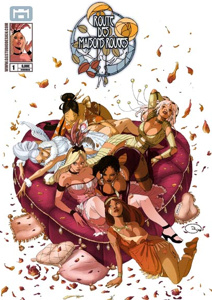




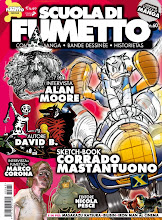













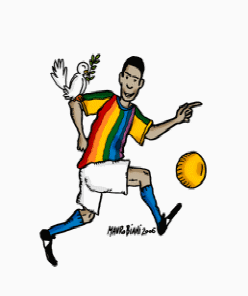






















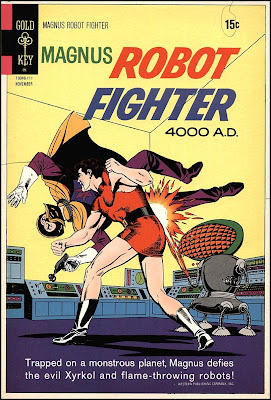















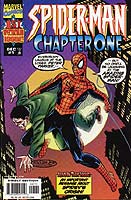













I think a Nicole Kidman version could work very well, she chooses interesting roles.
Modesty Blaise, creata da Jim Holdoway e Peter O’Donnell, è apparsa nel 1962 sul quotidiano londinese “Evening Standard”.Morto nel 1970 Holdoway, è stata disegnata dallo spagnolo Enrique Romero. In Italia, le strisce di M.B. sono state pubblicate dalla Eura Editrice sui suoi settimanali “Lanciostory” e “Skorpio”. Nel 1966, il regista Joseph Losey la portò sullo schermo interpretata da Monica Vitti. Fisiognomicamente, all’epoca, il viso della Vitti corrisponde, per la struttura generale, a quello di M.B.:l’ “ovale attivo” correla la combinazione caratteriale sanguigno-collerica(nEAP-EAP) che, con un tasso di Polisemia alto, dà sempre, come significante somatico,un bel paio di gambe estroverse e un dorso poderoso.Come tipo morfologico, M.B. è una longilinea mesomorfa, con un Indice del Pondus alto, tra 14 e 17 e un peso tra 62 e 65 chili;la circonferenza del seno è sui 92 cm., non si dimentichi l’ampiezza poderosa della schiena.
V.S.Gaudio, Miele e altri oggetti d’amore, copy.2000-03.
Nella Tavola degli Indicatori Globali,in cui Modesty Blaise viene comparata con altri corpi simulacro di attrici e personaggi dei comics, rilevante è il risultato della perfetta omogeneità degli indicatori connotativi e denotativi: difatti, M.B. ottiene 7 e mezzo sia in Iconicità che in Pregnanza, sia in Complessità che in Polisemia, tanto che il tasso generale del suo sex-appeal è superiore a quello delle attrici in comparazione: Marisa Allasio, Nancy Brilli, Geena Davis, Melanie Griffith, Daryl Hannah, Elisabeth Hurley, Julia Roberts.
V.S.Gaudio, da: Miele e altri oggetti d’amore, copy.2000-03.
Since the admin of this web page is working, no question very shortly it will be well-known, due to
its quality contents.